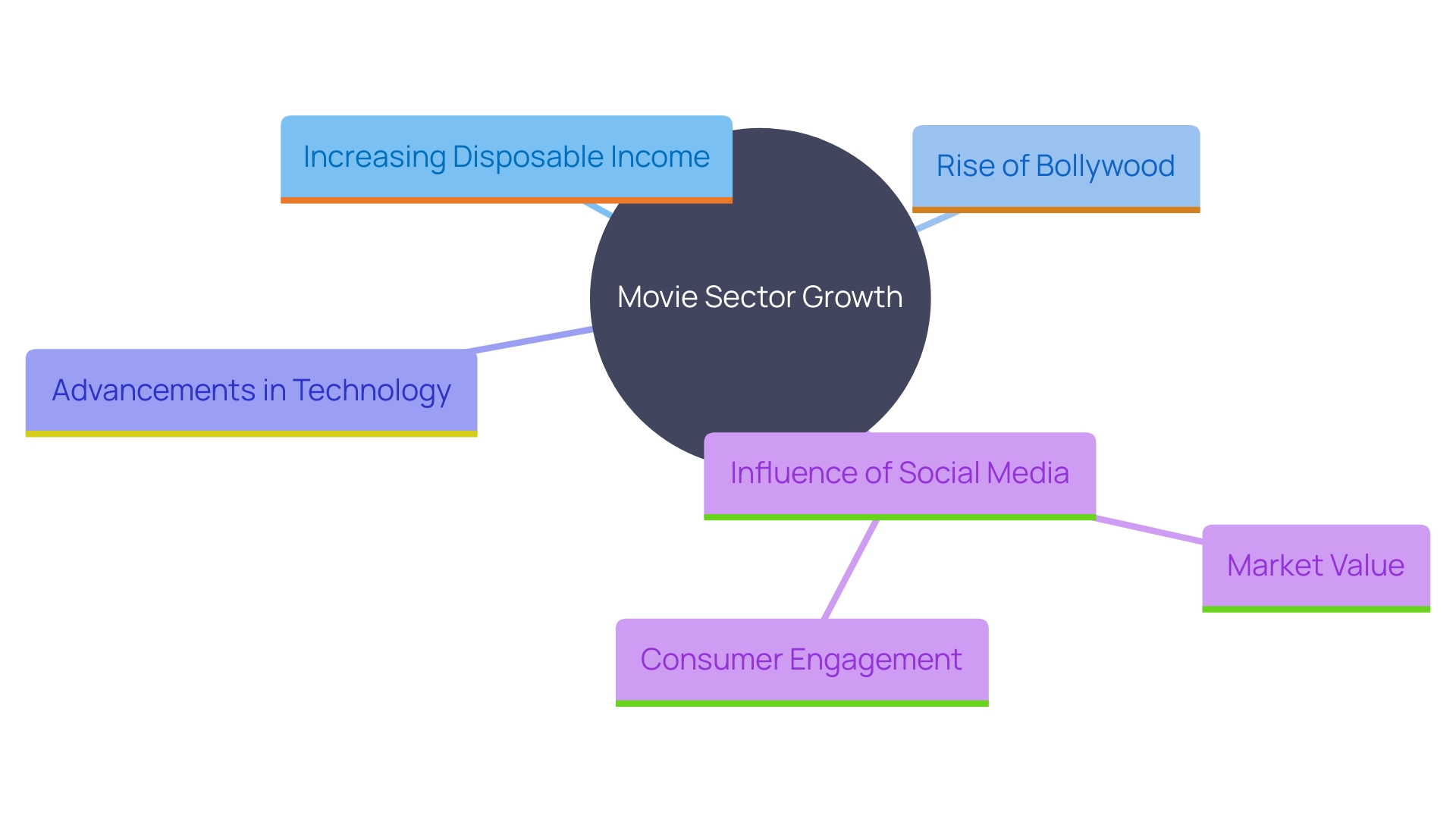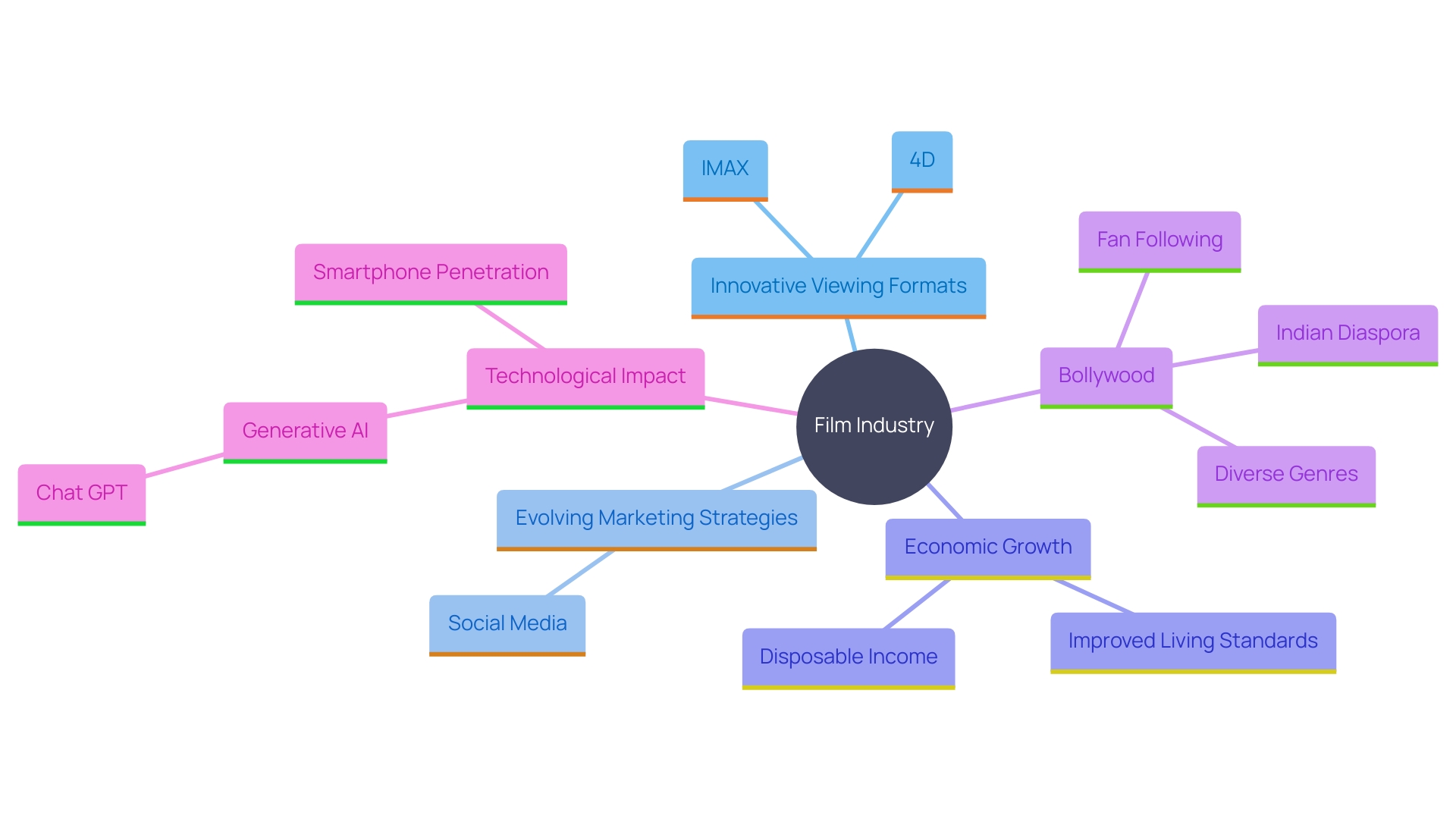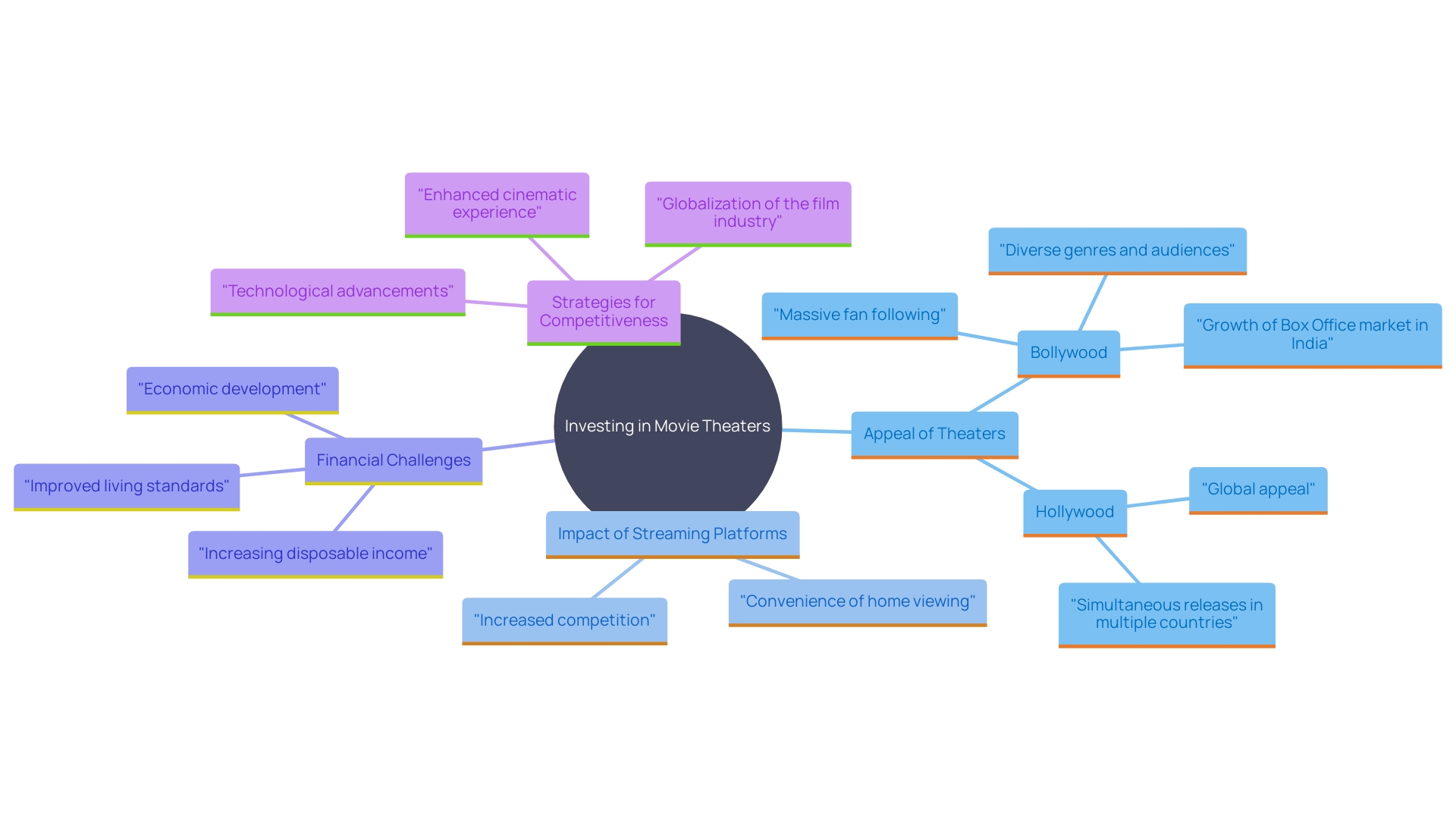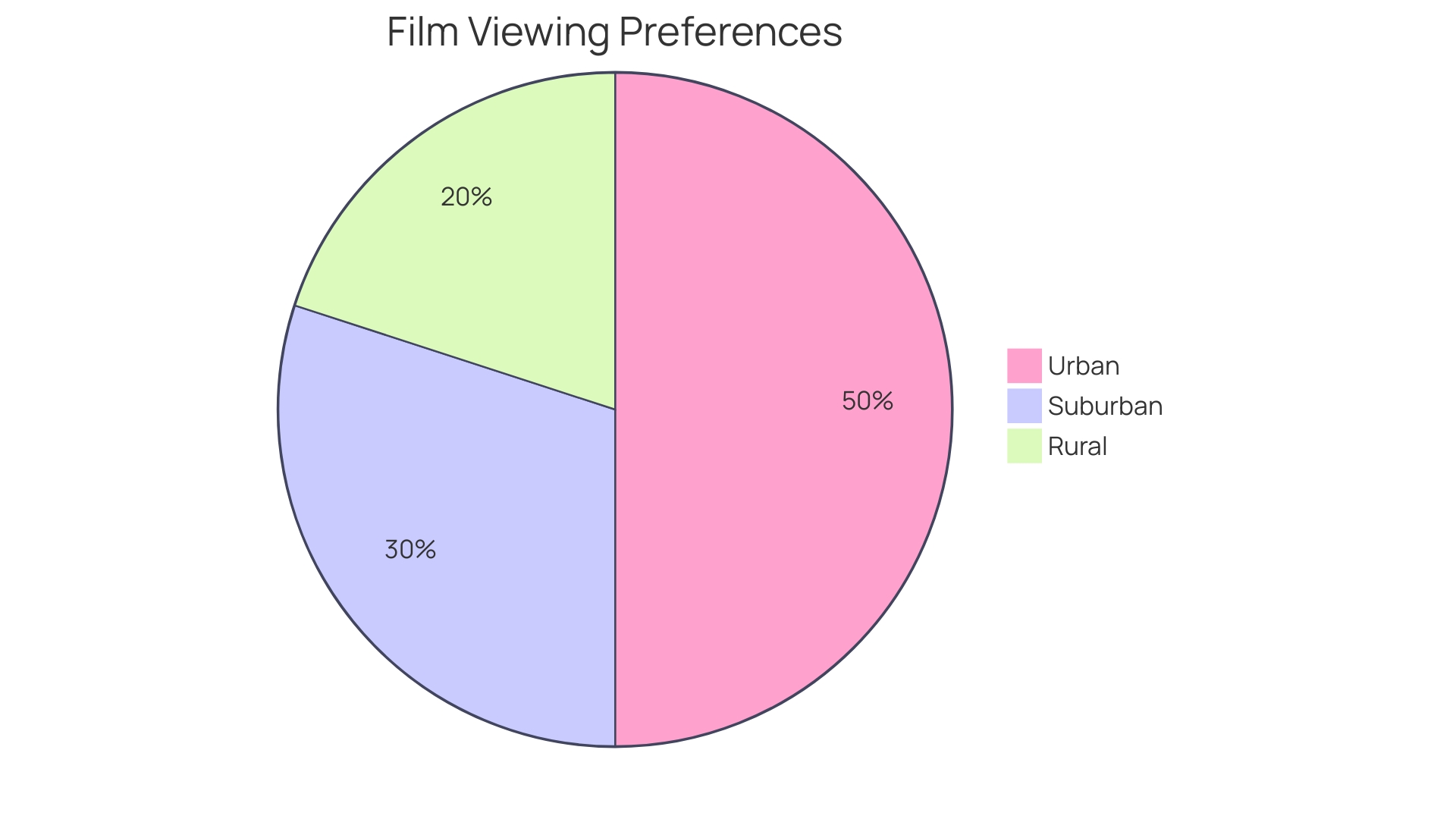Introduction
The movie business is experiencing a comeback due to its market value exceeding $42 billion and expected to increase by 5% annually for the next five years.This upsurge signifies a renewed enthusiasm among consumers for going to the movies and the growth in cinema multiplexes in cities.Economic influences, like disposable incomes are allowing more individuals to enjoy watching movies as a form of entertainment.
The entertainment sector gets a burst of energy from a variety of creative and original content sources. Especially Bollywood. Which enjoys immense popularity, among fans worldwide and contributes significantly to the global film industry earnings.
The way stories are told and made has been completely changed by advancements in visual effects technology and artificial intelligence development alongside animation progressions. Big players like Netflix and Amazon Prime have shifted how we watch entertainment by putting a lot of money into creating content that gives us ways to experience content. Social media sites like Facebook, Instagram, Twitter and YouTube are vital, for engaging with viewers and advertising movies highlighting how the industry is always changing.
The movie businesss expansion path and advancements in technology offer prospects, for those involved in it; highlighting a market that is constantly evolving and full of energy.
Market Size and Growth Projections
The movie sector is demonstrating strength and flexibility with a market value exceeding $42 billion on the rise. Forecasts suggest an annual growth rate of around 5% for the next five years. This positive trend is driven by a revitalized interest from consumers in theater experiences pandemic and the growth of cinema complexes, in city areas.
The revival of the sector is greatly influenced by economic factors at play here. Increasing disposable earnings allow more individuals to enjoy recreational activities such as attending films. The industry is witnessing a boom due to a movement toward diverse and innovative content options apparent in the flourishing Bollywood landscape. Bollywood's extensive fan base both domestically and internationally continues to be a significant factor in the rise of revenue in the film sector, globally.
The emergence of streaming services such, as Netflix and Amazon Prime has completely changed how we enjoy entertainment nowadays by shaking up fashioned distribution methods and offering fresh ways to enjoy content consumption. These platforms have significantly boosted their investments in creating content as mentioned in a recent Forbes piece. This has resulted in a diverse and engaging storytelling experience that captures the hearts of viewers worldwide.
'Technological progress continues to drive the field with advancements in areas like visual effects (VFX) animation techniques and tools such as artificial intelligence (AI) and immersive technologies making a significant impact in transforming the way stories are told and production processes are carried out.'. The use of real time rendering technology alongside sets and blockchain innovations is changing how content is distributed and managed in terms of rights and monetization processes while emphasizing the growing relationship, between entertainment and technology.
Furthermore, social networking platforms like Facebook, Instagram, Twitter, and YouTube have become vital for engaging with fans and marketing productions, broadening the audience and impact of content. * These developments highlight the substantial opportunities and constantly evolving environment within the motion picture sector.

Key Drivers of Market Growth
'Multiple elements are propelling the motion picture industry ahead in the day. The popularity of viewing formats such as IMAX and 4D presentations is attracting audiences seeking an enhanced entertainment experience beyond just watching a show. These innovative experiences provide a level of engagement and excitement that traditional screenings simply can't replicate. Furthermore, the inclusion of dining options within theaters has transformed the visit into an outing enjoyed by a broader range of people.'.
'Marketing strategies are evolving effectively by leveraging social media and collaborating with streaming services to attract audiences back to theaters. The concept is to take advantage of the reach and engagement opportunities of digital platforms. According to Matt Maders' insights, shifting the emphasis towards enhancing screening venues to make them more attractive to the public is vital. He pointed out that although concepts like incorporating bowling alleys and arcades didn't gain traction initially, the key is to continue exploring methods to enhance the viewing experience.'.
Alongside this aspect; Economic circumstances such as increasing income have allowed individuals to spend more on recreational pursuits like watching movies at the cinema as countries advance and living standards improve. Additionally, the worldwide growth of the film industry guarantees that a wider audience can access films and contributes to the expansion of the global Box Office market.

Investment Potential and Challenges
Investment in movie theaters can yield profits and prove to be a lucrative venture in busy city areas. Year alone witnessed a majority of UK adults visiting a movie theater at least once—a clear indication of the enduring appeal these entertainment spots hold in society. The phenomenal box office success of blockbusters like "Barbie" and "Oppenheimer," drawing in crowds of moviegoers further highlights the potential for substantial financial gains.. Engaging in this market does come with its fair share of challenges as well. The landscape has been reshaped by the emergence of streaming platforms that have revolutionized how consumers engage with content. Furthermore, maintaining cutting-edge technology may impose a financial strain on theater owners. The British Film Institute highlights the importance of acknowledging the relevance of film locations in their communities as vital cultural centers that draw a broad audience even during difficult economic periods. The key to success for investors lies in embracing concepts and flexibility to sustain the attractiveness and competitiveness of their properties in a constantly evolving environment.

Regional Market Analysis and Trends
The entertainment market is significantly shaped by variations; urban regions typically exhibit a higher demand for viewing experiences compared to suburban and rural locations where drive-in theaters and community showings are more frequent adjustments to accommodate audience tastes. In markets such as India, Bollywood dominates the box office rankings with its vast fan following not only in India but also within the global Indian community. Bollywood produces productions annually across different genres, a crucial element in propelling the growth of the box office sector.
'The film markets in Asia Pacific and Latin America are expanding rapidly due to an increase in earnings and the growing middle class population in these areas as economies advance and living standards rise, allowing more individuals to engage in leisure activities such as watching films. Additionally, the global reach of the motion picture sector has made films more accessible to viewers around the world, with popular Hollywood productions captivating audiences internationally and being released at the same time in different nations. Innovations in technology have also enhanced the movie viewing experience, drawing a larger crowd to theaters.'.
The cinema industry is increasingly focusing on practices as an essential aspect of their operations. Cine A stands out as an example by embracing eco friendly initiatives like utilizing solar panels and laser projectors despite the initial investment required. This dedication to sustainability not helps cut down long term expenses but also caters to the rising consumer preference, for environmentally conscious businesses.

Conclusion
The movie business is experiencing an upturn lately with a market value exceeding $42 billion and an anticipated annual growth rate of 5% for the upcoming five years ahead of us. This resurgence can be attributed to the growing interest among consumers in movies and the widespread presence of multiplexes in cities. Rising disposable incomes are allowing more people to appreciate films as a way to unwind and have fun while Bollywoods international influence plays a part, in boosting industry earnings.
The way stories are told is changing dramatically due to advancements in technology such as visual effects and artificial intelligence as well as immersive technologies like virtual reality experiences or augmented reality applications used in storytelling settings now more than ever before Streaming platforms such as Netflix and Amazon Prime have transformed how people watch content leading to increased funding for a wider range of stories that captivate global audiences Social media has also become a crucial tool, for promoting movies and engaging with viewers showing how the film industry is always evolving and adapting to new trends
New and exciting movie formats like IMAX and 4D are drawing in audiences looking for something to experience while having a meal at the movies is also becoming more popular among people as the economy gets better. Despite these trends in the cinema industry that offer unique experiences to consumers as they invest more in entertainment options during good economic times challenges persist especially from online streaming platforms competing for viewers attention and the necessity, for theaters to keep up with advanced technology.
In general the movie industry offers investment prospects particularly in cities with consistent demand for films. To thrive in this changing landscape it is essential to be flexible and open to ideas. By embracing emerging trends and prioritizing audience interaction investors and industry players stand to benefit from the opportunities within this dynamic market setting the stage for a promising future, in the world of cinema.




